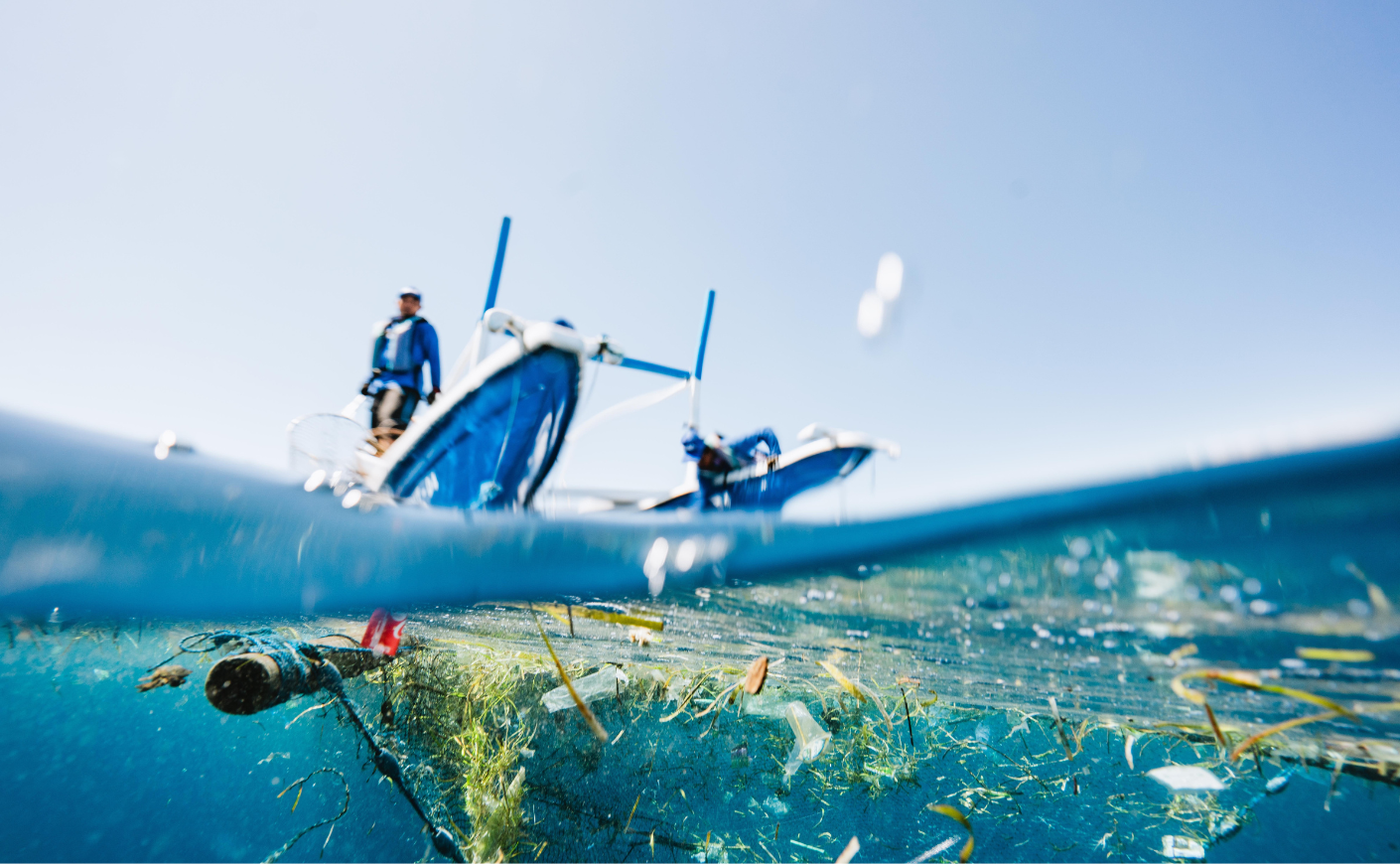Each year, billions of pounds of trash are dumped into our oceans, impacting already vulnerable sea life. But here's the good news: A batch of dedicated do-gooders are making a serious dent in reducing this deadly pollution.
Since its founding in 2017, the conservation group 4ocean has removed more than 40 million pounds of plastic, glass, and other debris from the waters around the world. The organization then repurposes this waste by making bracelets out of recycled materials, which are sold alongside everything from T-shirts to reusable steel water bottles, all of which help to fund the company’s invaluable work.
Sounds pretty impressive, right? Well, these efforts haven't gone unnoticed — the company boasts more than 3 million followers on Instagram. We sat down with 4ocean's executive director, Jack Lighton, to discuss the challenges and rewards of this ongoing work. (And if you're inspired to pitch in after you read our conversation, you can donate to the 4ocean Foundation right here.)
Katie Couric Media: 4ocean has collectively millions of trash from waters all over the world. Can you break down all of the work that goes into that?
Jack Lighton: There’s a lot of complicated work behind creating the systems and tools that our captains and crew deploy to clean up trash around the world. Our founder, Alex Schulze, is like a modern-day MacGyver. With a background in engineering, he creates custom-made tools at our Global Innovation Center in Florida. These tools have to withstand extreme conditions and salt water.
For example, we have these really advanced stainless steel sand screeners. They allow us to cautiously and carefully softly sift sand to remove some of the smaller pieces of plastic that end up breaking down over time. All of this ultimately gets into our food web. So, there is a tremendous amount of work we have done in our seven short years, and Alex has helped really create a movement of awareness and then action. It's taken decades for us to create this problem, and it's going to take decades for us to solve it, but we have to.
What are some of the most common items you find in oceans?
Plastic bottle caps are the number one offender worldwide. We also find a lot of plastic bottles, so it’s important to opt for a reusable water bottle. Plastic bags are another big source. This might seem small, but if a hundred thousand people carried reusable bags, it would have a big impact.
People can do so many things individually, but the other side is our business partnerships. Businesses want to do good and transform, but they’re often vilified. We’ve found that most of them want to engage and figure out how to do better.
What sort of companies do you work with?
A lot of the companies and industries we work with, you normally wouldn't equate with being tangential to the ocean or sustainability. One that comes to mind is a flooring company. Now, some types of flooring are made of organic materials like wood, and they may have a sustainable footprint. This flooring company has a wide variety; it's not just wood, but they're very involved in sustainability.
I also sit on the tourism board here in Florida, where I’ve worked with cruise line operations, hotels, resorts, airlines, you name it. Cruise lines around the world used to be significant offenders of ocean pollution. But they’ve significantly improved, without a doubt.
You can’t blame any one industry or community. Seven rivers worldwide [The Nile, Danube, Niger, Mississippi, Ganges, Yangtze, and Thames] pump hundreds of millions of pounds of marine debris, mostly plastic, into the ocean. One of the things that we do with our work in Guatemala is we target these pumps by sending our captains and crews to those specific areas to remove the debris before it gets into the ocean, but it’s a massively complicated process.

Why does plastic end up in the ocean at all? Is there a way to improve recycling?
It's challenging because, in many areas, there isn't the infrastructure to recycle plastic materials properly. Our factory in Bali, Indonesia, is a perfect example of how to recycle plastic into a clean, safe material that is ready to be repurposed. We can take ocean-bound plastic and properly recycle it, or if it's unrecyclable, properly dispose of it. There just aren’t many facilities worldwide that can do this efficiently.
For example, the U.S. used to lack recycling facilities, so we would ship it to an international country with recycling facilities. Economically speaking, it wasn't favorable to create recycling facilities, and it was easier to ship it away. But we're starting to catch up now and understand that glass and aluminum are really important raw materials, which we’re increasingly running out of.
How does this pollution impact sea life?
Microplastics impact all water on earth. Each person eats a credit card worth of them every year — the number might even be higher now. Plastic is made with many chemicals that are endocrine disruptors, which throw off our hormones.
The same thing happens in our marine life. I used to manage a sea turtle hospital here in Florida. Some incredible researchers are looking at the endocrine material or chemicals that come from plastic and how, for example, some of those chemicals are starting to appear inside the eggs of sea turtle hatchlings. We also see fish and other animals accidentally eating plastic debris. This gets into the food web, which we also ingest.
But the reality is this is a solvable challenge. It will require a change in supply chains and for us to get off single-use plastics. So, you can make a difference at the individual level — or if you're running a multinational corporation, you have some of the best opportunities to drive impact quickly.
This interview has been edited and condensed for length and clarity.









